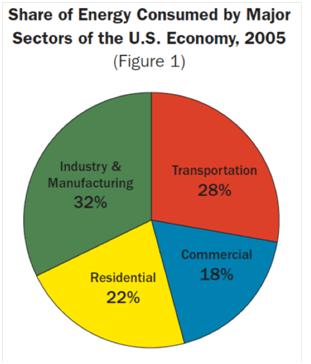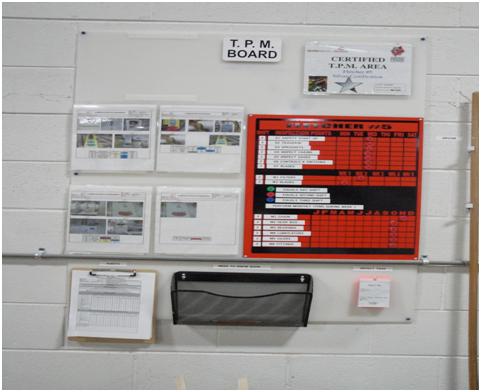January 30, 2011. Energy costs play a major roll in the financial position of most companies. Energy costs are often hidden in overhead expenses. A poll performed by (NAM) or National Association of Manufacturers showed that management of small and medium size manufacturing companies believe higher energy costs are having a negative affect on their bottom line (EPA 2007). Manufacturing facilities are dependent on large amounts of machinery/equipment that operate with various sources of energy such as electricity, natural gas and fossil fuels. Manufacturing processes are not the only demand for energy. Transportation of their raw materials and the final product, also maintaining a commercial office space should be considered. In Figure 1 these factors are shown. Considering these areas, 78% of the energy consumed by major sectors of the U.S. economy directly affects most Industrial and manufacturing companies in the U.S. such as the Wood products industry.

Energy savings have ridden the coat tails of most lean efforts. (EPA 2007) The more efficient you can make a process the less energy it will take to perform any process. These hidden energy savings are an ancillary benefit from lean improvements that have been mainly concentrated in the manufacturing processes and not directed towards a goal of energy improvements.
The Forest Products industry and manufacturing as a whole depend on their equipment/ machinery to perform many different processes. The active use of a lean tools like Total productive Maintenance (TPM) is a series of methods, originally pioneered by Nippendenso (a member of the Toyota group), to ensure that every machine in a production process is always able to perform its required tasks so that production is never interrupted. (Womack and Jones 2003). An example of a TPM Board is shown in Figure 2. A TPM Board allows individuals to see all relevant information related to the maintenance of that process or equipment. This allows for transparency, so all levels of personnel have access to the information. TPM also works toward reducing defective products, by maintaining machinery/ equipment they will be more efficient and cause less re-work.

Re-work is a example of wasted energy where the initial energy consumed to make the defect is lost and then extra energy used to correct the defect. In the re-work processes the energy used for the machinery is not the only energy lost. The energy used to light, heat and cool the space is also relevant in the terms of energy waste. TPM and the elimination of re-work activities help to improve energy efficiency in companies by eliminating energy waste. Lean manufacturing tools will generally improve the overall energy efficiency of the companies by eliminating unnecessary actions in the production. The greater the attention given directly towards Lean and energy specifically the greater reduction of consumption that in return allows for energy cost savings.
Sources
- EPA, Lean and Energy Tool Kit, 2007: www.www.epa.gov/lean/toolkit/LeanEnergyToolkit.p
- Womack, J. And Jones, D. 2003, Lean Thinking: Banish Waste and Create Wealth in your Corporation. 3rd ed. Free Press, New York, USA.
